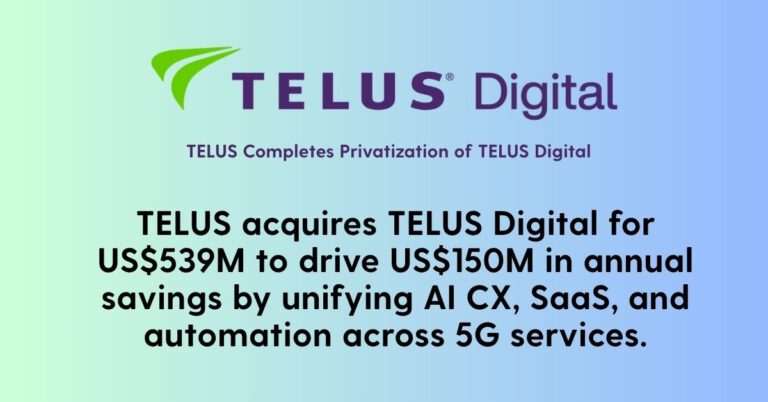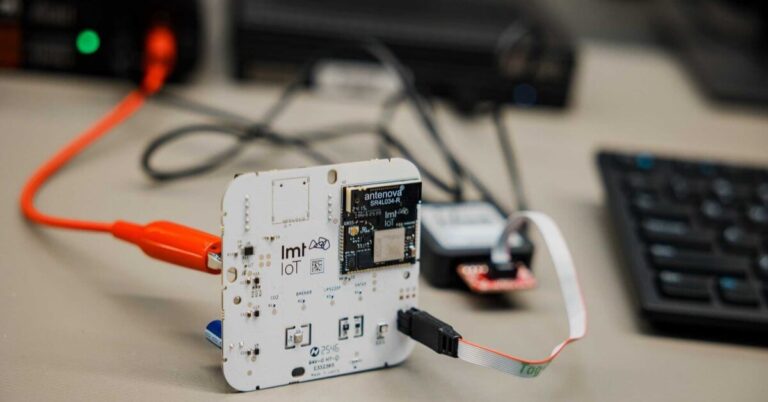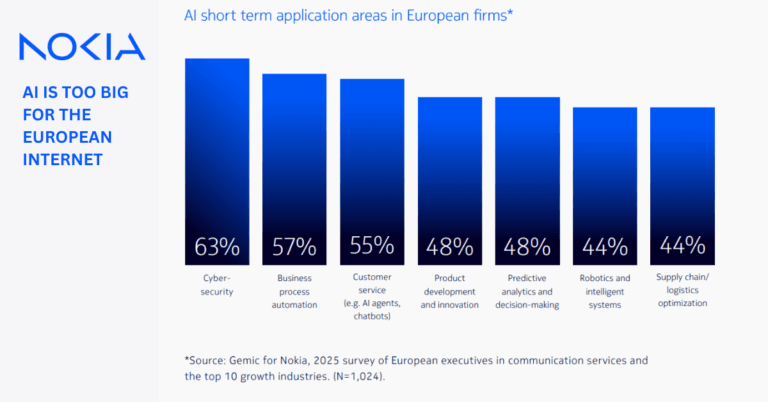TELUS Digital takeover: what it means for AI CX, SaaS, and 5G
TELUS has taken full ownership of TELUS Digital, a move designed to consolidate AI-powered customer experience, SaaS, and automation capabilities across its telecom, health, and agriculture businesses while unlocking material cost efficiencies.
Deal snapshot and key figures
TELUS acquired all remaining TELUS Digital shares for US$4.50 per share, valuing the transaction at approximately US$539 million and issuing a small portion of TELUS common shares alongside cash to complete the deal; the entity will be delisted from the TSX and NYSE and cease public reporting. Management targets roughly US$150 million in annual efficiencies from automation, business simplification, and tighter cross-selling. Approvals were secured in late October, with closing on October 31, 2025, giving TELUS 100% control and the latitude to integrate product, go-to-market, and back-office operations.
Strategic rationale and benefits
Bringing TELUS Digital in-house aligns digital CX, AI platforms, and SaaS delivery more tightly with TELUS’ core network and vertical businesses—TELUS Health and TELUS Agriculture & Consumer Goods—improving speed of execution, product coherence, and shared data insights. The combined portfolio can deliver end-to-end solutions that blend connectivity, AI-driven customer engagement, and industry-specific software, positioning TELUS to defend margins, reduce churn, and expand wallet share in enterprise and consumer segments.
Implications for TELUS portfolio and 5G customer experience
The privatization creates a single operating fabric across network, data, and applications to modernize support, accelerate 5G monetization, and scale vertical SaaS.
Telecom core: AI CX, automation, and ARPU growth
Expect faster rollout of AI-assisted care, digital onboarding, and proactive service—capabilities that can lower cost-to-serve while improving NPS and reducing churn. Tighter integration with the network layer can enable use cases like real-time quality diagnostics, intent-based service changes, and automated field operations, all of which matter as operators migrate to 5G standalone and seek to monetize premium experiences. For B2B, an integrated stack combining connectivity, secure identity, and AI-driven workflows strengthens TELUS’ position in contact center modernization, omnichannel engagement, and managed services.
Health and Agriculture: cross-sell and data effects
In TELUS Health, embedding digital CX, AI triage, and workflow automation into virtual care, benefits administration, and pharmacy services can enhance outcomes and throughput. In Agriculture & Consumer Goods, TELUS can fuse supply-chain data platforms with customer engagement tools to support traceability, demand sensing, and direct-to-consumer programs. The ability to cross-promote across TELUS’ large installed base in Canada—and selected global accounts—gives the company a lower-cost, higher-trust route to SaaS growth.
Synergies, risks, and financial outlook
The consolidated structure brings meaningful cost takeout potential but also integration complexity and commercial balancing acts.
Where the US$150M savings come from
Cost reductions should concentrate in overlapping SG&A, vendor consolidation, shared platforms, and AI-driven automation across support, sales, and operations. Unified data models and tooling can reduce duplication across marketing stacks, analytics, and DevOps. Streamlined commercial motions—single contracting, bundling, and common success teams—should lower acquisition and servicing costs while increasing attach rates in adjacent services.
Integration and execution risks
Key risks include integration fatigue, slower delivery during platform consolidation, and attrition of high-demand AI and engineering talent. External clients of TELUS Digital may reassess a now fully captive provider, raising concerns about neutrality and roadmap prioritization. Leverage and capital allocation discipline will matter as TELUS balances network investment, spectrum, and growth initiatives with synergy realization. Reduced public disclosures after delisting may limit transparency for customers and partners accustomed to quarterly detail.
Market context and competitive dynamics
The move fits a broader telecom pattern of retooling digital businesses to accelerate AI, automation, and enterprise software growth tied to 5G and edge strategies.
Telcos consolidating digital units: trends
Across the industry, operators have been restructuring digital and enterprise arms—some spinning them out for growth equity and focus, others reintegrating to capture synergies and speed. TELUS’ choice to privatize favors direct control of product and platform decisions, faster cross-portfolio packaging, and disciplined cost takeout—a response to margin pressure, rising network costs, and the need for differentiated digital experiences.
AI, network APIs, and edge for CX
As operators advance AI operations, expose network capabilities via standardized APIs, and scale edge compute, coupling these with a mature digital CX and SaaS capability becomes a competitive lever. TELUS can integrate AI-driven assurance, identity, and policy with customer workflows and partner ecosystems—areas where alignment with hyperscalers and ISVs will be critical for scale and speed.
What enterprises and partners should do now
Customers, partners, and peers should assess how a fully private TELUS Digital changes roadmaps, engagement models, and service levels over the next year.
Guidance for enterprise clients
Validate product roadmaps, SLAs, and support models post-integration, with particular attention to data governance across telecom and SaaS estates. Seek clarity on pricing, bundling, and contract harmonization, and ensure exit and interoperability provisions remain intact. For CX and contact center modernization, explore new offers that embed network intelligence and automation to accelerate ROI.
Guidance for operators and B2B buyers
Use this as a benchmark for evaluating whether digital units should be more tightly integrated to capture AI and automation gains. Prioritize operating model changes that consolidate data, tooling, and GTM motions, and be explicit about talent retention in AI/ML and product management. For buyers, compare TELUS’ vertically integrated offers against best-of-breed stacks on total cost, time-to-value, and governance.
Signals to watch in the next 12 months
Monitor pace of synergy realization against the US$150 million target, net revenue retention in external accounts, and product launches that fuse network insights with CX and vertical SaaS. Watch for deeper alliances with hyperscalers and ISVs, evidence of 5G and API-enabled CX use cases at scale, and talent moves in AI engineering and design. These will indicate whether TELUS’ privatization thesis is converting into durable growth and improved unit economics.








































